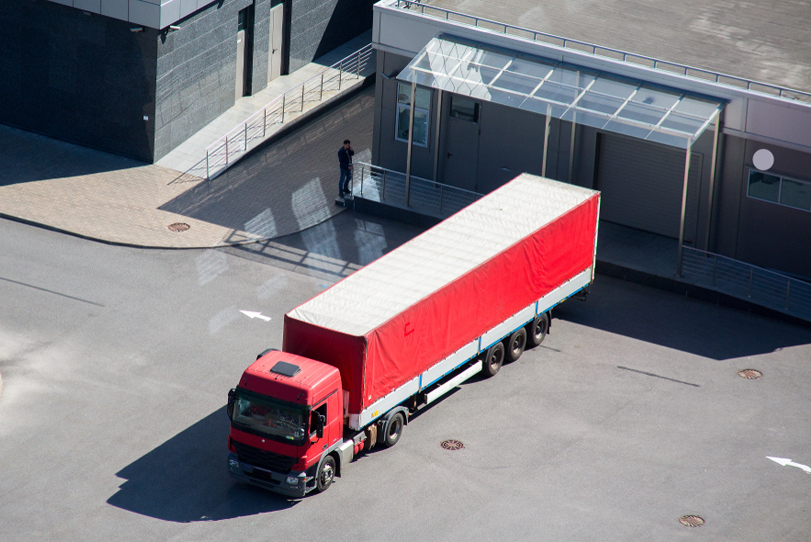Leading experts in transportation and cold supply chain deliberate the challenges and last mile delivery for cold chain vis-a-vis emerging technologies.
The market for cold chain valued at USD 233.8 billion in 2020, is projected to reach a value of USD 340.3 billion by 2025, growing at a CAGR of 7.8 percent in terms of value. The increasing need for temperature control to prevent food losses, along with the rising demand for perishable goods among consumers, is driving the growth of the cold chain market.
Hence, there is need to create more better ways to address the infrastructural issues and challenges to create a sustainable cold chain moving and monitoring all along.
Challenges in measuring cold chains for long-haul transportation
According to Manjunath, “Long Haul refrigerated transportation of perishables involves larger value and volume of the product. Hence, it is vital to ensure the safety, quantity and quality of the product to land at the intended destination exactly, as it was dispatched. Hence, the key challenges are to monitor several parameters during the journey.
Primarily temperature inside the cargo box needs close realtime monitoring to ensure it stays within defined bandwidth by the proper operation of the on-board refrigeration system. Secondly, we need to monitor the relative humidity, if required for that specific product.
Driving behaviour, harsh braking & un-required driver interventions need to be monitored. Unplanned & unapproved stoppages along the way and diverting from the planned route needs to be detected on a real time basis.
Pilferage of refrigeration system fuel or the product itself needs monitoring. Door openings need to be detected en route on real time basis. If the product is frozen, then the optimum defrosts operation needs monitoring. However, all these are based on Internet and GSM connectivity and to that extent these are liable for blind spots and data transmission delays.
Further, the immediate analysis of the trip data is still a manual task. Here, we need to have programmable systems that can flash all data analytics for each trip within a few minutes of the trip completion or even as the trip is progressing”
Rajat Gupta, CEO, Tessol remarks, Temperature maintenance is very critical transportation of temperature sensitive items. For example, vaccines require a temperature which is very specific such as -60 to -70 degree C. Anything more or less could drastically affect the consignment and lead to damage. With frozen food items, if the temperature during transit gets altered, it can change the texture and flavour of the food which can be very harmful, if consumed.
When the consignment is in transit, there is no sure shotway of monitoring the temperature and there is an increased reliability on the eutectic device being used. Even though most companies ensure that temperature checks are in place, there is always a risk of something going wrong. Most times, the only data which is provided to the end user is the temperature details at which the consignment was shipped and it can get very hard to determine the stage at which the damage occurred. This is an especially risky monetary loss especially, if there are large volumes of the product being shipped. Hence investments in real time monitoring solutions become very crucial.
At TESSOL, our real time monitoring solutions, known as TAMsys, is an extremely efficient added benefit. Unlike other real time monitoring systems, TAMsys offers temperature and humidity data, a six month to two year battery life, no hub or sim recharge cost and provides an automatic set up with any smart phone. TAMsys can be installed in three simple steps. One is by setting up the device on the TAMsys mobile app, second is by keeping the device on the container and fixing the QR code and third is by monitoring the application.
Infrastructural challenges in having last-mile delivery for cold chains?
Discussing about supply challenges, Rajat explains, “Temperature controlled distribution of the last mile segment is not supported by conventional units as they cannot work on capacities smaller than a 1-ton vehicle. Given the small package sizes, the large costs incurred in transportation makes conventional solutions unviable for most stakeholders forcing them to break the cold chain or use potentially hazardous substances like dry-ice especially towards consumer / retail end of the chain. This severely impacts product quality and creates opportunities for spoiling customer experience.
A large part of the cold chain transport is also seasonal in nature and requires multi temperature fleets even on smaller vehicle platforms. Conventional units which are fixed on truck need dedicated fleets, making cold chain transportation unreliable or impossible for most products and package sizes in India. This significantly impacts food quality and increases wastage.”
Talking about challenges, Manjunath mentions, “The importance of LMD is now seen due to the growth of distribution of refrigerated products into Tier 2 & Tier 3 cities. The key infrastructure challenges are related to narrower & poor roads that connect the markets to the distribution warehouses.
There has been considerable development in Small Refrigerated transportation vehicles. However, the LMD is usually a Multi Point Delivery and this required a very strong refrigeration system, be it conventional or the PCM based technology. It is important that the last delivery in a LMD distribution should have the same refrigerating effect as the first delivery. Hence, quicker recovery of temperature after each delivery is critical. The behaviour of distribution vehicle operators too defines the success of the LMD. The speed of all the stakeholders, the consignor and the consignees in the SCM in the delivery system defined its success.”
Cost complications in adopting the latest technologies for an integrated cold chain
Talking about technological advantages, Manjunath says, “Any new technology is promoted with a few advantages to the user. It is also an additional capital expenditure to the user. So, when any latest technology is absorbed into the business, we encourage the user to apply our Evaluation Matrix. This matrix enables the user to see where the latest technology brings returns to his business. The evaluation should offer results on improved productivity, revenues, reduced opex, Higher quality and hence customer acceptance.
Better sales control over a wider area. So, it all depends on what technology is considered and for which department or business area is it applied to. This is an interesting area where we can actually question and evaluate the technology and not just blindly accept it. Rajat says, “With the focus on vaccine distribution and growth in food processing, retail (online and offline), HoReCa and food delivery markets for perishables, there is a huge surge in demand for temperature-controlled distribution. The demand is further spiked by the increased consumer awareness and the need to comply with basic quality standards. However, temperature-controlled logistics in the retail distribution segment is the major pain point for stakeholders. Given the nature of our retail network, the average package size, especially for general trade in India, is very small.”
TESSOL solutions allow brands and distributors to offer end-to-end transportation of packages from source to customer without breaking the cold chain up. Our proven ‘Thermal Battery’ technology provides desired temperature control (from -25oC to +25oC) across enclosures ranging from a 5 litter bag to 20 feet (10 ton) truck.
Our core technology uses proprietary PCM (Phase Change Material) heat exchangers and chargers that store thermal energy (therefore the term “Thermal battery”) and release it as required during the transport period. Therefore, these solutions need no power source during transport and are independent of the type of vehicle used. This not only offers a huge flexibility on size and transport vehicle increasing access to fragmented general trade, but also reduces the cost significantly. A smaller vehicle means higher fuel efficiency in addition to saving on fuel for cooling. All the savings on fossil fuel while impacting the bottom lines also have a significant environmental impact.
These offering can be customised to trucks and containers of varying capacities thereby offering brands multi-use flexibility. Through a holistic approach across multiple dimensions, TESSOL has in a very short span of time enabled over 300 brands including Mondelez, Vadilal, Reliance fresh , Amul and others ,grow and expand their horizons.
Mihir Mohanta, GM – SCM, Mother Dairy remarks, when we talk about transportation and storage for fruits, vegetables and perishable goods, I think we still lag in having appropriate transportation systems in India. Perishable products like fruits and vegetables are wasted due to unavailability of cold storage and improper transportation facilities. Now, when we talk about challenges, in India, we can produce anything that can be produced anywhere in the world. But our challenges are that post harvest losses are very high. Therefore, there is a need of transportation from one location to another location and India being such a huge country, so the losses are very large.
Countries like the USA have a defined process or defined standards for transporting each of the commodities. But in India, it is one thing that is necessary. Now, the other challenge in the cold chain is, most often truck drivers are blamed for not delivering the temperature. But in reality, it is not just the drivers who are responsible to maintain the temperature; there are technical and manufacturing reasons as well, like the body of what is an IRB (Integrated Reefer Box). In India, trucks are manufactured by same Mahindra or Tata but they don’t manufacture the reefer boxes. Reefer boxes manufactured are sold separately by other vendors. Therefore, it is necessary that we have a regulating body around it, which passes and confirms to the standards.
Agreeing with Manjunath and Vikram, Mihir said, for medicines, I don’t see much of a challenge. Because even today, if we go to a very remote village, you find the hospitals are operating, medicine service is on, and in a very small village set up in my native, they have a proper cold storage with deep freezer installed into it. So, I think the networking in medicine is far better than the infrastructure we have for vegetables and fruits. But definitely, we can still improve that infrastructure. We have to transport so much of vaccines for each and every individual. So, I think volume and capacity planning scopes are still there for us.
Conclusively, pandemic’s impact has resulted in creating cold warehousing as reduction in food wastage and reduction in cost are the prime concerns. There is an impending need to connect clients with warehousing providers and cold chain transporters. Agriculture reforms are providing impetus to renew our technologies to contain wastage of produce which is a curse to any burgeoning economy. The tracking and tracing techniques to check the real time temperature at various points needs deliberations to know real time happenings, like temperature fluctuation etc. With predictive analytics, Internet of Things, wireless sensors, all this in the next two-three or maybe in five years- we will get to see a lot of things happening. Obviously, in the changing technological scenario, innovation is the key.
Cookie Consent
We use cookies to personalize your experience. By continuing to visit this website you agree to our Terms & Conditions, Privacy Policy and Cookie Policy.















